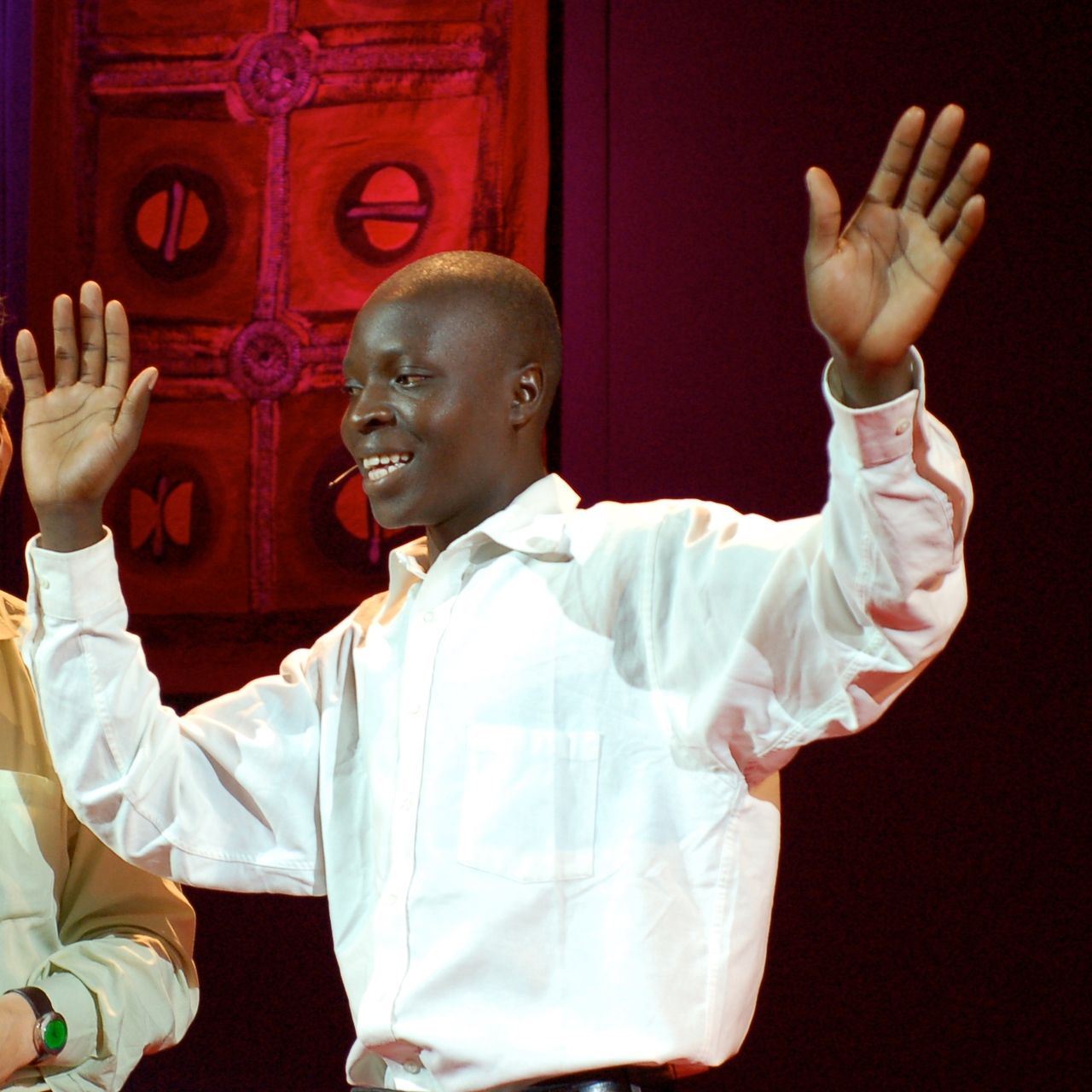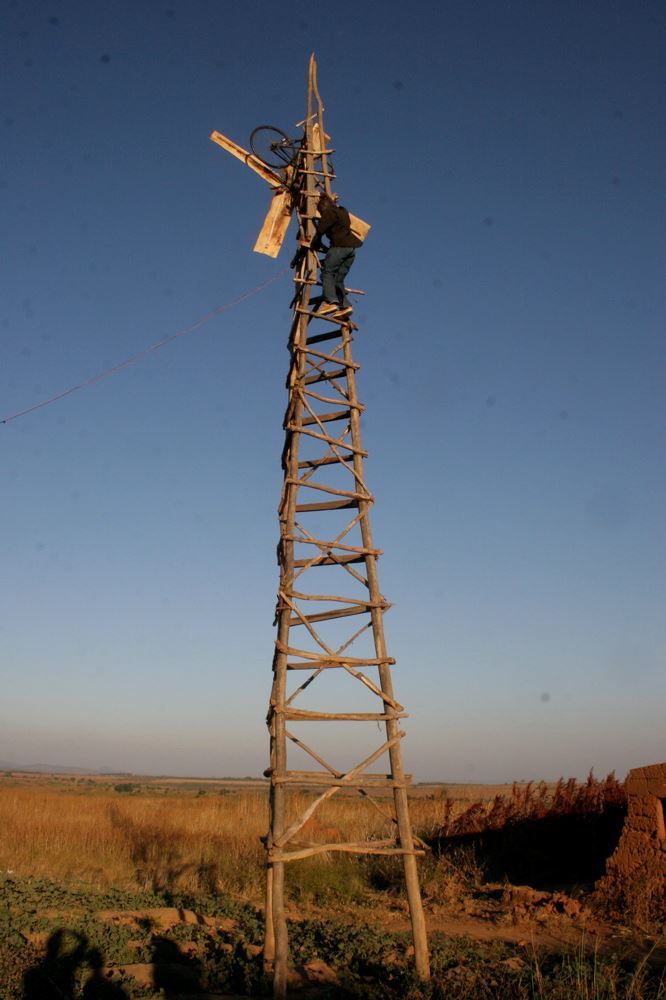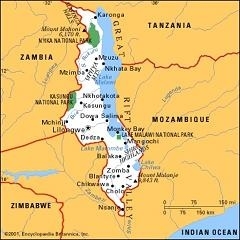Imagine designing and building your own windmill. Now imagine you're 14 years old, you live in Malawi in South Eastern Africa and the village where you live has no electricity.
It was 2002 when William Kamkwamba learned that he would no longer be able to continue his schooling. His family couldn't afford to pay the school fees, so William, all of 14 years old, took on the task of educating himself. With the help of mentor Dr. Hartford Mchazime and the Malawai Teacher Training Authority (USAID), William was able to keep his hungry mind fed. "I read a book (called) Using Energy by Mary Atwater." With this book, William was able to re-design a power-generating windmill… using mostly salvaged materials: wooden poles, broken pipes, old shoes, copper wires, his father's old bicycle, anything he could find that might work. And if he couldn't find it, William made it. PVC pipes were cut, heated and pounded until flat to serve as the blades for the windmill. "I had some problems because I was using a bicycle chain… so I had to remove it and use a fan belt from a car… and that works better…"
 William Kamkwamba on the TedX stage in 2007By Erik (HASH) Hersman from Orlando - William Kamkwamba, CC BY 2.0, https://commons.wikimedia.org/w/index.php?curid=7078410
William Kamkwamba on the TedX stage in 2007By Erik (HASH) Hersman from Orlando - William Kamkwamba, CC BY 2.0, https://commons.wikimedia.org/w/index.php?curid=7078410
One can't help but wonder what could motivate him to take on this Herculean task, but a recent phone call to William in Malawi answered our questions. "I decided to make a windmill after some problems in my family." William is one of seven children. He has six sisters - five of them are younger than him. "My sister was coughing from the paraffin candles… they smoke and are dangerous." With no electricity in his village, all lighting was done by candle… a commodity that would have to be regularly brought in from a market over ten kilometers away. William's windmill would mean electric light and just maybe… a healthier sister.
 William Kamkwambas with a new windmillErik (HASH) Hersman from Orlando (William's WindmillUploaded by Church of emacs) [CC BY 2.0], via Wikimedia Commons
William Kamkwambas with a new windmillErik (HASH) Hersman from Orlando (William's WindmillUploaded by Church of emacs) [CC BY 2.0], via Wikimedia Commons
From a mish-mash of materials William erected his first working windmill at the age of 14. It generated enough energy to light his room. But this was only the beginning. William took an old oil barrel to a tinsmith and had him cut new, more efficient steel blades. With the use of his father's old bike, William turned up the gear ratio on his windmill, helping it to turn the turbine faster and thereby boost the power production. Now his windmill powers several light-bulbs as well as two radios. It supplies lighting power for the whole house as well as power to charge local cell-phones and a car battery for backup power. "Most of the time I like to listen to the radio but due to lack of batteries you could not…so that was another reason….and now I want to run the computer."
That computer is a result of William becoming a FELLOW at TED GLOBAL 2007. TED, which stands for Technology, Entertainment and Design started in 1984 as a conference with people from these disciplines. Their mission: to spread ideas. "We believe passionately in the power of ideas to change attitudes, lives and ultimately, the world. So we're building here a clearinghouse that offers free knowledge and inspiration from the world's most inspired thinkers, and also a community of curious souls to engage with ideas and each other." William was invited to attend the most recent TEDGLOBAL conference in Tanzania by Emeka Okafor, the TEDGlobal curator. News of William and his accomplishments had been spreading through Africa, starting with an article in Malawi's Daily Times entitled, "School Drop-Out With a Streak of Genius" and spreading to the influential blog sites: TimbuktuChronicles, Soyapi Mumba, AfriGadget and others. William's humble, meaningful story about his windmill became the emotional highlight of the conference where people like Bono and Jane Goodall were also speaking.
 |
| Map of Africa (William's blog) |
Tom Rielly, Partnership Director, TED Conferences, said "When I first met William Kamkwamba, I was struck by his intelligence and ingenuity. He's overcome both the lack of access to education and the lack of monetary resources to set a great example for young people everywhere by making life better for his family. Now his sisters and he can read at night, listen to the radio and see television that helps make them part of the wider world. He inspires me everyday."
Africa means a great many things to a great many people. Many of us in the West hear only the disturbing parts… famine, war, epidemics. But there's another story to be told about Africa; the story of the so-called "Cheetahs," the people in Africa who aren't waiting for government or foreign aid or NGOs to solve their problems. They are the Africans who are standing up and saying, "The change begins with me. I am the answer." William is one such African.
 |
| Map of Malawi (William's blog) |
"What I like about William," says fellow African blogger and friend, Soyapi Mumba, "He didn't join the multitude of people just blaming government or policy makers for his lack of education. Neither did he point fingers at (power companies) or his parents."
In building his windmill, William was forced to fabricate some of the electric components from scratch. For instance, "A light switch... that I made from plastic pipe and rubber from shoes and some springs." Also a circuit breaker. He's also designed a radio station that transmits to an audience within 100 square meters. But he figures that 20 square miles is what he really needs. His goal is to broadcast a message to his fellow Africans about not contracting HIV. "I googled 'how to make a radio amplifier'. I got a lot of information. Now I will think about how to make it work for me."
William is nineteen now and attending school, thanks to special interest from Dr. Hartford, deputy head of MTTA, who was so impressed by the boy that he arranged for his schooling to be covered by the government. The lucky school is the African Bible College Christian Academy in Lilongwe, the capital of Malawi…about an hour south of where William's family lives.
William's heroes? After a brief discussion about heroes and who and what they may be…William said he has been inspired by many, but he would have to say that his mentors, Dr. Hartford Mchazime and Tom Rielly from TED are his heroes because "they have helped me to manage my plans and to make my plans possible."
And just what are William's plans? A few little things… like a sustainable future for his family, his village and ultimately the planet.
To follow William's progress, check out his blog.
Update
Kamkwamba founded the Moving Windmills Project in 2008 to support development in Malawi, particularly in his hometown of Kasungu. His nonprofit focuses on providing clean water, education, sustainable farming, and community programs to prevent future famines. It funds school resources, scholarships, and infrastructure projects like wells and solar-powered pumps.
His memoir, The Boy Who Harnessed the Wind, was selected for several university and community reading programs, including 1 Book, 1 Community in Virginia and common book programs at the University of Florida, Boise State, Auburn, and the University of Michigan. A documentary about his life, William and the Windmill, won the Grand Jury Prize at the 2013 SXSW Film Festival.
Kamkwamba was named one of TIME magazine’s "30 People Under 30 Changing The World" in 2013 and is featured in Extraordinary People by Michael Hearst. He earned a degree in environmental studies from Dartmouth College in 2014 and was elected to the Sphinx Senior Honor Society.
In 2019, The Boy Who Harnessed the Wind was adapted into a film starring and directed by Chiwetel Ejiofor. Watch the trailer here: "The Boy Who Harnessed the Wind," produced by BBC Films.
Page created on 7/11/2015 3:32:28 PM
Last edited 2/4/2025 4:40:30 PM
Learn about the Moving Windmills Project, a non-profit organization inspired by William Kamkwamba that pursues rural economic and educational development in Malawi, Africa.
Learn more about William Kamkwamba's struggle to improve his life and the lives around him in his book The Boy Who Harnessed The Wind, being released on September 29th, 2009
